In June we have had more Crinum and Hymenocallis blooming, as well as some of our cactus plants. As I write, the Hemerocallis (daylilies) are moving into full bloom as well.
Cactus and Succulents
Opuntia phaeacantha, from my niece's neighborhood in Centennial, Colorado (a suburb of Denver), put on a great display a couple weeks ago. Plants of this species have naturalized in an old cemetery in the sandy soil of Northwestern Indiana. I think we need to keep an eye on any of these hardy cacti, so they don't go feral on us.
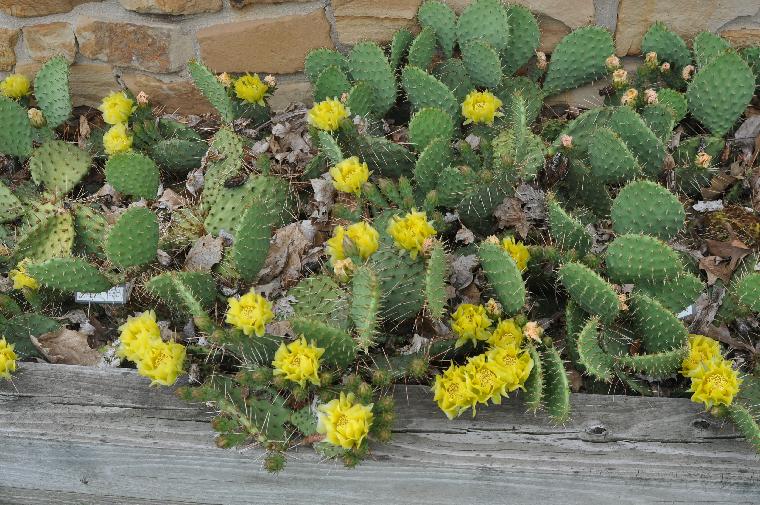
Opuntia phaeacantha
Echinocereus reichenbachii caespitosus is a small ball cactus with a flower about as big as the ball, around 2 inches across.
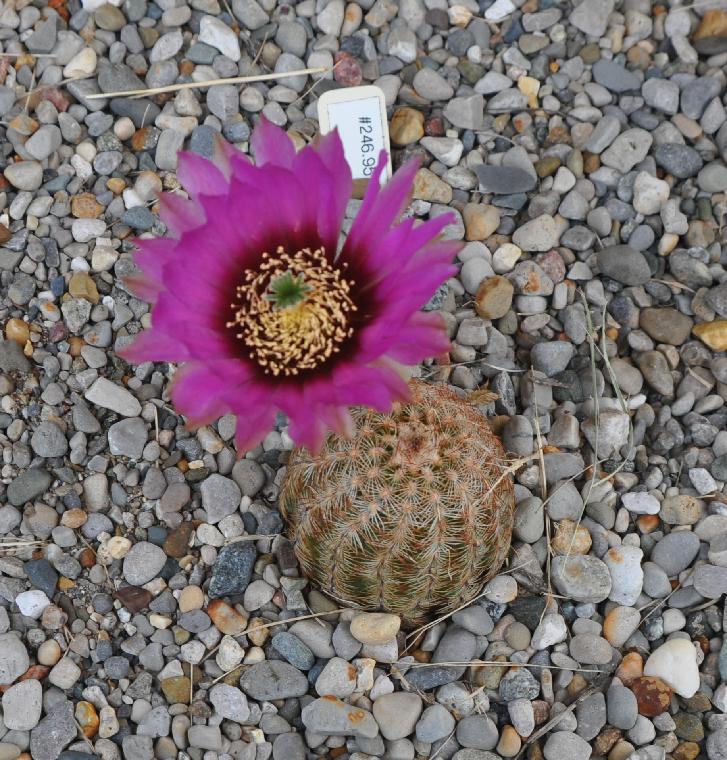
Echinocereus reichenbachii caespitosus
A few feet away in the same bed, and an order of magnitude larger than the Echinocereus, is this Yucca filamentosa. The plant came from my cousin Janice's yard at her farm house outside Wabash, Indiana. As a kid, I saw these often in old cemeteries and outside old farm houses in Indiana. Now, thanks to Janice, I have a couple of my own.
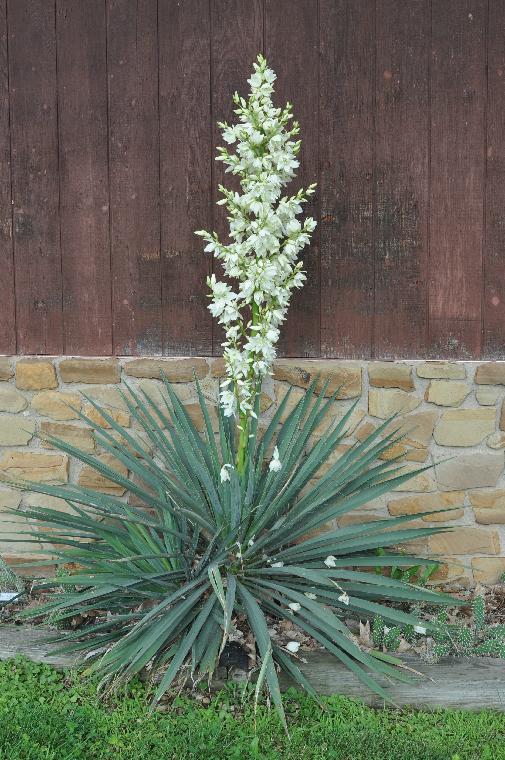
Yucca filamentosa
At least I think it is probably filamentosa. I'm not strong at IDing Yucca and its relatives. In any case, the plants bloomed especially nicely this year.
Hardy Triteleia
Triteleia x-tubergenii is a hybrid that looks alot like T. laxa but seems a bit hardier here. This is a West Coast genus closely related to Brodiaea, some of which are also hardy here. This cultivar grows happily in a bed in the ground, perhaps protected by some large Red Cedar trees just to the northwest of it. The Brodiaea survive and bloom in a raised bed in sand and gravel.
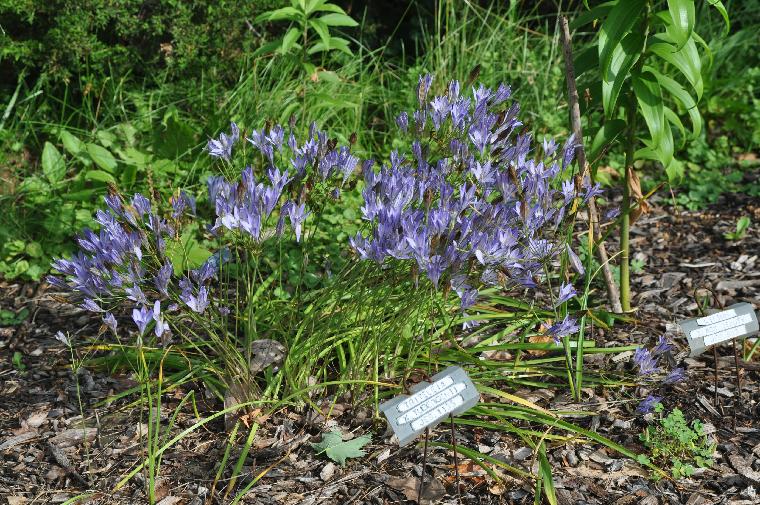
Triteleia x-tubergenii
Once upon a time in the Onion Family, Alliaceae, these were moved into the family Themidaceae for awhile. With the most recent revision by the Angiosperm Phylogeny Group, these are now in Tribe Brodiaeoideae in the Family Asparagaceae, Order Asparagales. Incidentally, the onions are now in the Amaryllis Family, Amaryllidaceae (or the amaryllids are in the onion family, Alliaceae).
Hymenocallis glauca
This little beauty reminds me of Hymenocallis eucharidifolia, but the foliage is glaucous gray-green rather than bright shiny green, and the plants are much hardier in my greenhouse in winter.
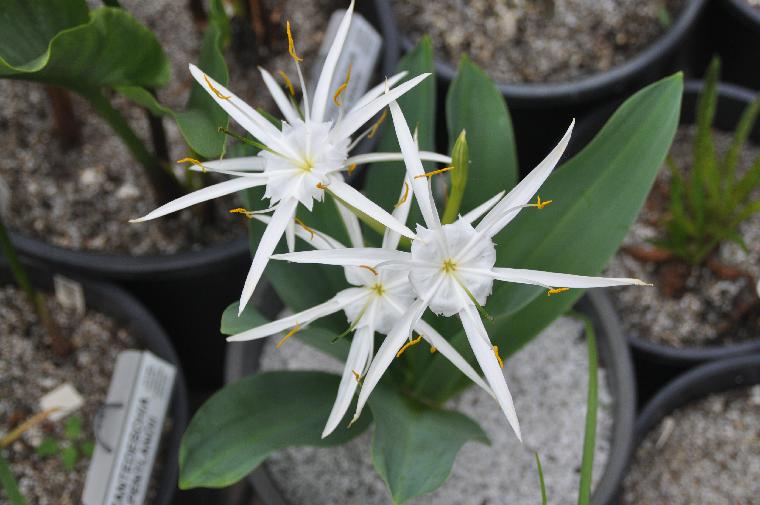
Hymenocallis glauca
I have some hybrids between this species and eucharidifolia that are coming along nicely. I'd like to see a somewhat larger flower, or at least wider cup, on the hybrids. The cross is [glauca x eucharidifolia] so the seedlings could be glauca x self. In any case, they have glaucous leaves.
Half of my remaining pots of eucharidifolia seem to have died in the greenhouse over the winter. It did not get as cold as it has in some past winters, but we had lots of rain and snow. The greenhouse floor, where these pots were sitting, flooded a couple of times. I suspect that the winter moisture did them in.
Good gardening, from here in central Indiana
Jim
Look up technical terms in the Glossary of Plant Biology